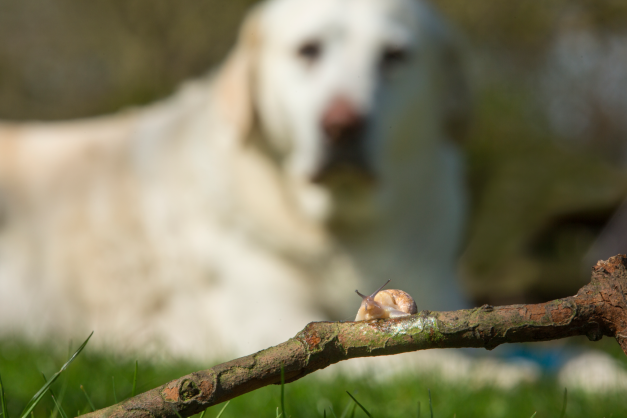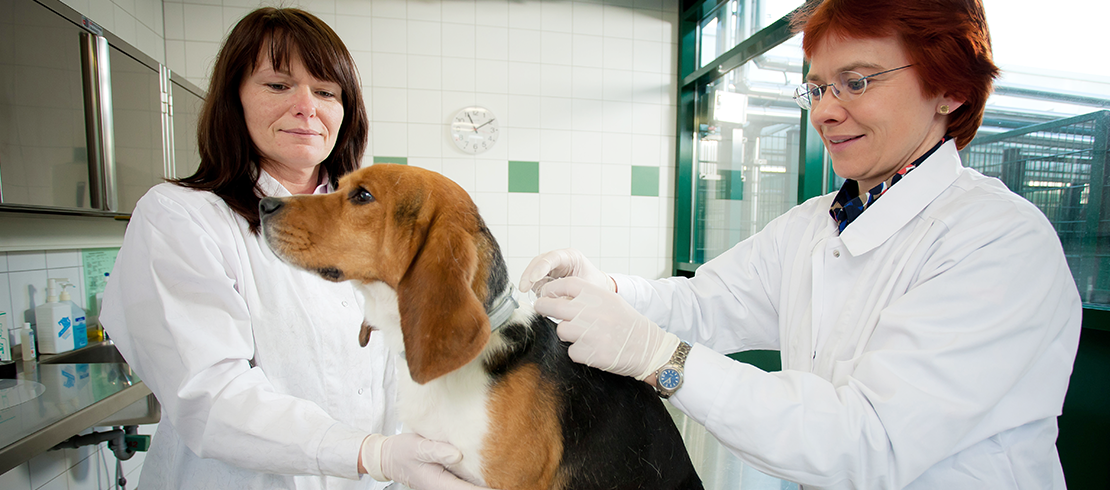Lungworm (Angiostrongylus vasorum) is a nasty parasite which can cause serious health problems in dogs and may be fatal if it’s not treated in time. Read on to find out how to protect your dog against this growing threat.
What is lungworm?
Lungworm (scientifically known as Angiostrongylus vasorum) is a parasitic worm that can be carried by dogs, foxes and other wild canids.
Despite its name, the lungworm parasite resides in the heart and blood vessels of an infected animal where it lays eggs that get carried to the lungs.
If a dog becomes infected, it can make them very ill and may even prove to be fatal.
How common is lungworm?
Once rare in the UK, it has spread into new areas. Cases are now being reported across the country, including the Midlands, North of England and Scotland, as well as the established hot spots in the South of England and Wales.
The reason for the spread is not known for sure, but various factors are likely to be involved, including changes in climate and an increase in pet travel within the UK. Foxes also play a role in the spread: the numbers of foxes infected with lungworm has increased significantly in recent years1, and foxes put local dogs at risk by infecting slugs and snails in areas where they roam.
You can use this lungworm map to see how many cases have been reported near you.
How do dogs become infected with lungworm?
There are several ways lungworm can infect dogs.
The lungworm larvae are carried by infected slugs, snails and even frogs2, and dogs become infected by eating one of these common garden creatures.
Even though slugs and snails can release foul-tasting substances as a defence mechanism, it’s not always enough to put a dog off. Dogs can intentionally or accidentally eat these small creatures when they rummage through undergrowth, eat grass and drink from puddles or outdoor water bowls.
Lungworm larvae can also be released into the slug slime trail3; meaning anywhere a slug has crawled over is also a potential risk.
Although the disease cannot be directly passed from dog to dog, infected dogs still pose a risk. The lungworm parasite will pass into their faeces in the form of larvae, exposing slugs, snails and frogs in the locale to the parasite, and putting more dogs at risk of infection.

What are the signs of a lungworm infection in dogs?
When a dog becomes infected, the larvae grow into adult lungworms, which live in the heart and blood vessels. The worms will then start to lay eggs that are carried to the lungs where they hatch into larvae. The presence of the adult worms in the heart and the larvae in the lung tissue can lead to serious health issues.
But recognising a lungworm infection in a dog can be difficult because signs vary. They may include4:
- Breathing problems (such as a cough)
- Abnormal blood clotting (such as bleeding into eyes or from the nose, bloody urine or stools, internal bleeding, or minor wounds that bleed for longer than usual)
- Not wanting to go on ‘walkies’
- Unexplained weight loss
- Changes in behaviour (your dog might display signs of depression, exhaustion, or even seizures)
- General illness such as vomiting or diarrhoea or generally being off-colour.
Dogs may display just one of these signs, or a combination. But in the early stages the infection may go unnoticed.
These signs are also common with lots of other conditions, so it can be difficult to know if your dog has lungworm from the symptoms alone - if your dog shows any of these signs, get them checked over by your vet as soon as possible.
How is a lungworm infection diagnosed in dogs?
Diagnosing lungworm has been made easier in recent years with the arrival of new tests for the parasite.
Your vet may ask for samples of your dog’s poo, which allows them to look for lungworm larvae. There are also blood tests available that can detect if your dog is carrying the parasite.
Depending on the symptoms your dog is showing, your vet may also consider taking a chest x-ray or carrying out bronchoscopy, in which they use a camera to look down your dog’s windpipe.
Can a lungworm infection be prevented in dogs?
Preventing your dog from eating slugs or snails is almost impossible because often they eat them without even realising. But by using a lungworm preventative – which you can only access through your vet – you can protect your dog from contracting the parasite and becoming dangerously ill.
Not all dog wormers are effective against lungworm, so speak to your vet about a suitable product.
It’s important to note that preventative lungworm tablets and spot-ons for dogs must be given monthly and can only be prescribed by your vet. Worming every three months (which is often advised for other parasites, such as roundworm and tapeworm) will not be effective at preventing this parasite.
What other measures can I take to protect my dog?
There are ways you can reduce your dog’s exposure to lungworm:
- Stop your dog eating slugs/snails where you can - Of course, it’s impossible to know when this might happen as slugs can be tiny, making it hard to know when your dog is at risk. But if you happen to catch your dog sniffing at a slug or snail, move them away from the danger zone immediately.
- Don’t leave toys in the garden overnight - Any ball or toy left out in the garden at night may attract slugs and snails so make sure you tidy them away. Smaller snails can reside in the crevices of toys or burrow underneath them, and dogs may accidentally swallow these while playing.
- Regularly clean water bowls kept outside - If you keep a water bowl for your dog outside, be sure to wash it regularly. Slugs and snails will seek out sources of moisture, making your dog’s water bowl an ideal target.
- Pick up your dog’s poo - We know that responsible dog owners already do this, but if everyone picked up and bagged their dog’s poo, it would help to limit the spread of lungworm.
These tips can help reduce the risk. But a monthly prevention plan will give you peace of mind to know that your dog is protected in the great outdoors. Speak to your vet about prevention of lungworm.
If my dog contracts lungworm, is it possible to treat the disease?
If you believe your dog may have lungworm, visit your vet as soon as possible. Lungworm treatment is available and, provided it is caught early enough, many dogs will make a full recovery.
When it comes to prevention, there are two important things to remember.
The first is that not all wormers are effective against lungworm; products that prevent lungworm can only be prescribed by your vet.
And secondly - lungworm prevention must be given monthly, worming every three months will not be effective at preventing lungworm.

Is it possible for humans to be infected with lungworm?
The species of lungworm that affects dogs isn’t thought to pose a risk to humans. But other types of worms (including roundworms, tapeworms and hookworms) can cause disease in humans. That’s why it’s so important that you worm your dog regularly, to help protect not just your dog, but your family too.
References:
- Taylor et al. Parasitology (2015), 142 (9): 1190-5
- https://www.bluecross.org.uk/pet-advice/lungworm-advice-dog-owners
- Conboy G et al. Parasitol Res (2017), 116: S41-S54
- https://www.vets-now.com/pet-care-advice/dog-has-lungworm/
